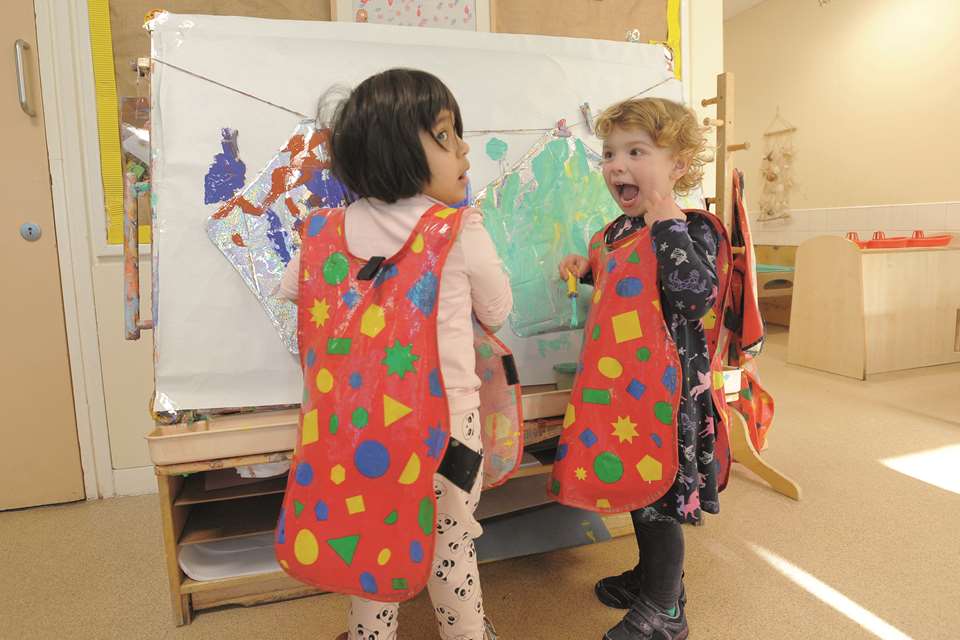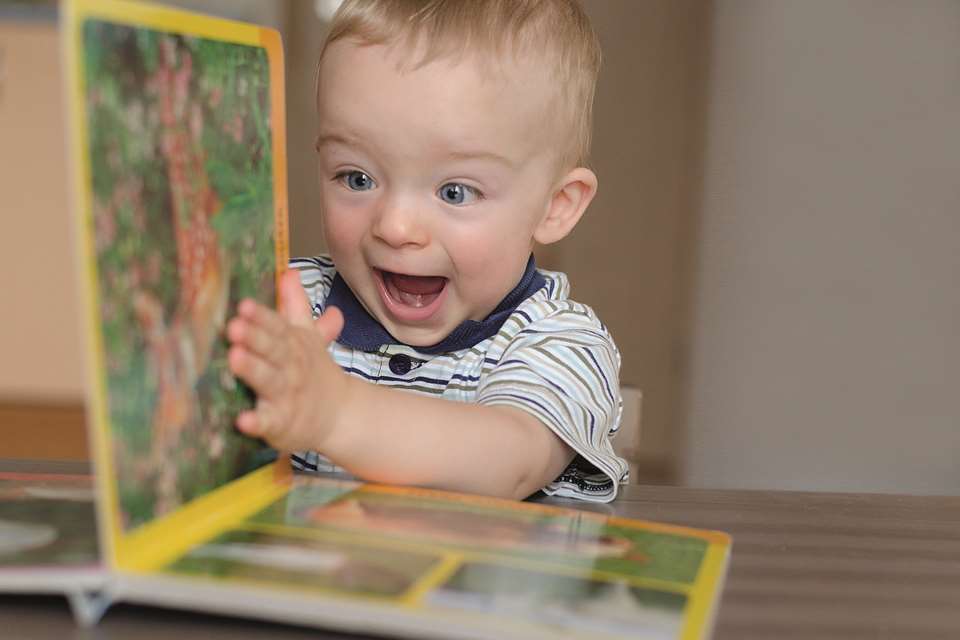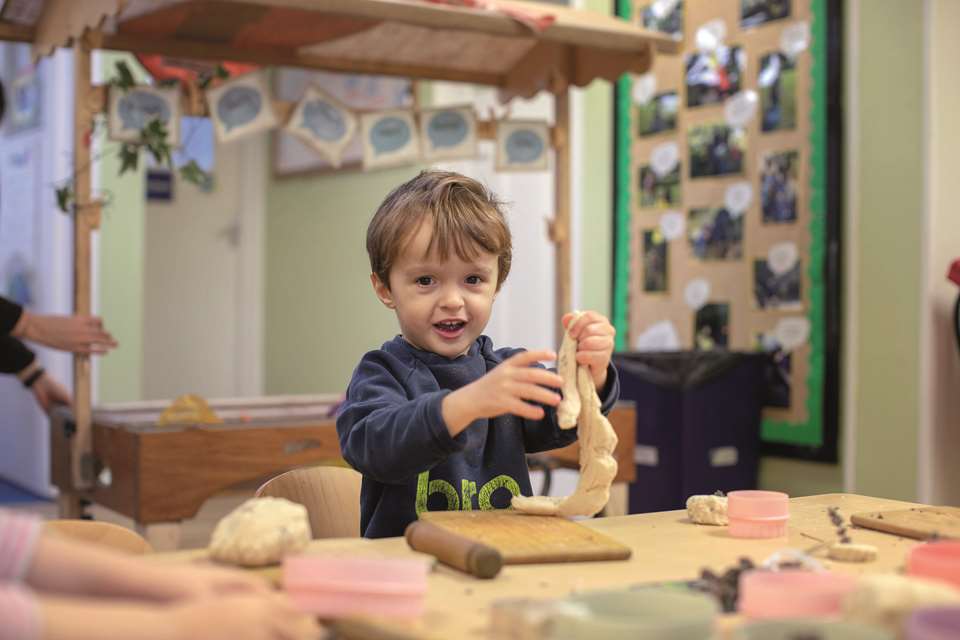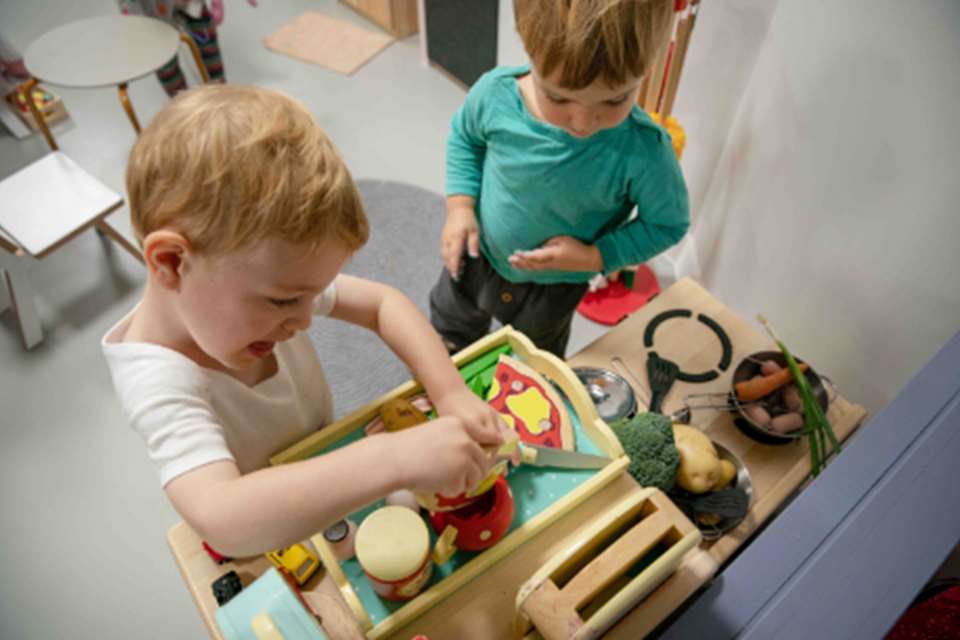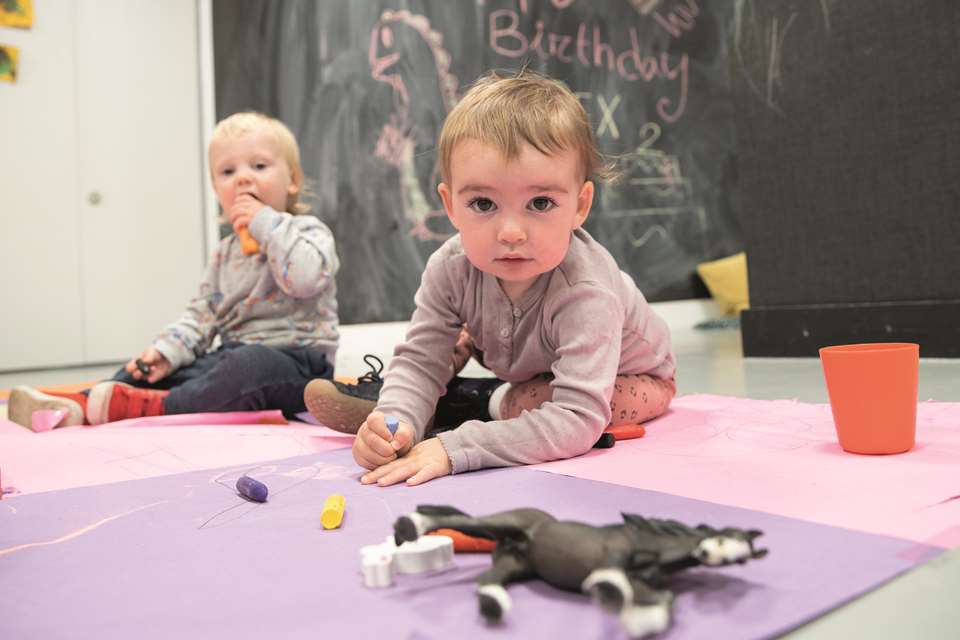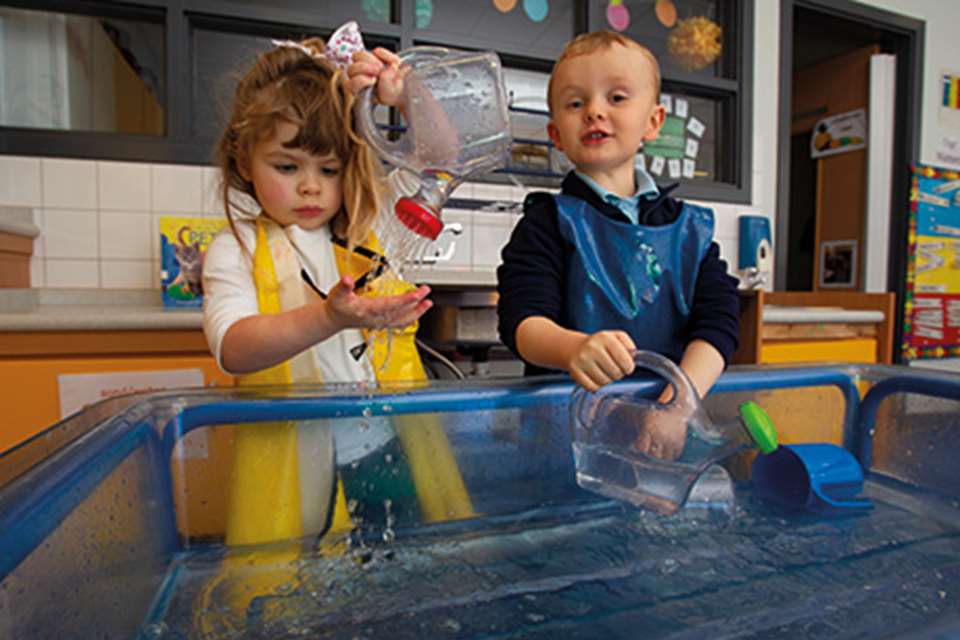Around the Nursery, Part 8 - Purpose built?
By Penny Tassoni
Tuesday, May 5, 2020
Routines are beneficial to both a setting and its children – but they have to be useful and meaningful. By Penny Tassoni
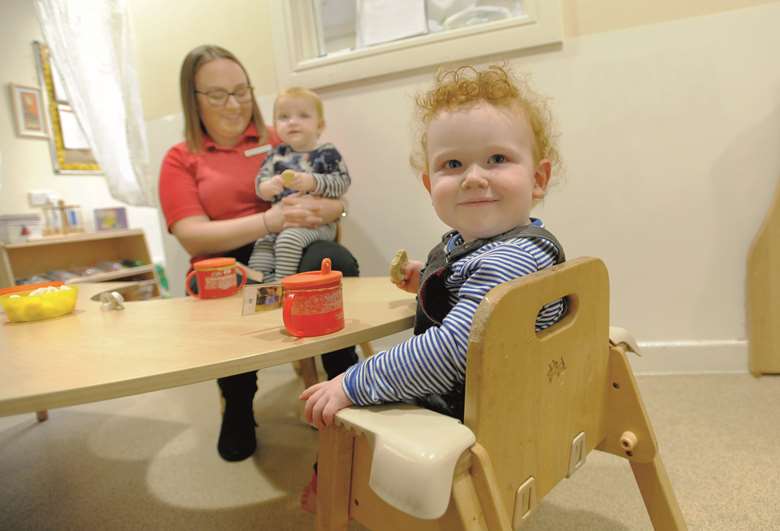
Every early years setting will have some routines in place such as snack times or tidy-away times. Routines create an underlying structure to sessions or days. They are also associated with transitions, such as at home time when children move from our care to be back with their parents. When routines are successful, they should be positive moments for everyone involved. They should also provide children with opportunities to learn and develop.
The trouble for some settings is that routines have often evolved over time or have been inherited. With Ofsted’s new focus on the quality of education, some settings might need to revisit their routines and consider whether they are still working well.
BENEFITS
Routines can be highly beneficial to children’s overall development. Effective routines can help children feel safe and so help them to regulate their emotions, especially when they first arrive in a setting. Some routines can also help children gain confidence as they learn self-care skills, such as dressing or feeding.
All routines have the potential to support children’s language if adults are engaging with children and creating opportunities for sustained dialogue. In the baby and toddler room, nappy changing, dressing and feeding are particularly important in this respect. For older children, there are opportunities for specific vocabulary learning – for example, ‘sleeve’ during dressing and ‘wipe’ when cleaning a table before snack time.
With a little thought, routines can also help children’s early literacy and mathematics as well as their understanding of the world. Recognising that routines are not just times to ‘get through’ is, therefore, important.
THE PURPOSE OF ROUTINES
A good starting point when reflecting on routines is to identify each routine and to consider its purpose. This is important, especially in longstanding settings where routines may have been created that are no longer necessary or relevant. There are perhaps three broad categories of routines:
Routines whose main focus is organisational – for example, we tidy away at this time in order to get the tables out for lunch.
Routines that are focused on children’s health, well-being and physical needs – such as snack time and the changing of nappies.
Routines whose main purpose is to support children’s learning and development – such as storytime.
Having identified what type of routine is in place, the next broad question to ask is whether or not the routine is actually working. Signs that routines are not working include frazzled adults, anxious or restless children, and also a dip in the mood of the setting.
In addition, as every routine has the potential to be a positive learning experience for children, you should also think about what children are actually learning. A poor tidy-up routine can result in some children learning how to avoid responsibility, while a poor arrival routine can create long-term anxiety in children and their parents.
SCRAPPING SOME ROUTINES
You may identify that some routines need improving in terms of how they support children’s learning, especially ones relating to organisation. However, there may be some routines that simply need to be scrapped because they do not contribute in any way to children’s learning. This is particularly important when it comes to group times that are taking children away from their play and interests.
My pet hates are the weather chart and circle time. The weather chart is usually done indoors where there is no weather and is too simplistic to develop detailed vocabulary. The circle time is meant to help children’s language but often children are not actually talking or listening in a meaningful way. If routines do not stack up in terms of their intention and then their impact on children, Ofsted is likely to take a dim view.
WHY PLANNING IS ESSENTIAL
Whatever the reason that underlies the routines in a setting, it is important that time is spent thinking about how to carry them out in ways that will engage children, support adult-child and child-child interactions and develop children’s confidence and skills.
It can be worth identifying the potential within each routine to support children’s development at different ages and stages and how this links to the areas of learning with the EYFS. By taking this approach, routines can take on a whole new dimension.
Arrival routines
One of the most important routines for both children and parents or primary carers is the arrival or ‘meet and greet’ routine. This is the point at which children enter the early years setting and usually within a few minutes separate from their parents. The needs of children and their parents can vary at this point. Children who are new to the setting or are under three years old may need a little more time and support to make this transition. When arrival routines are working well, a ‘win-win-win’ situation is created. Parents can leave their children feeling reassured, children can have a good start to their session and there is a positive for everyone else.
The focus of this routine should be about children’s emotional development. It can therefore be helpful to focus on these points:
- How welcoming is the environment for parents and children?
- Will children see their key person or a very familiar adult on arrival?
- How do we support parents and children to say goodbye?
- What happens immediately for children once their parents have left?
- Which children need close proximity to a key person for the first half hour?
- How can we help children to be active participants in this routine – for example, self-registering with parents and finding a photo or name?
Home times
Home times are another important emotional transition for children. While some settings have children that depart together, in others home time is staggered. There are many ways to enrich home times for children so that they can ‘sign’ off from the setting:
- Children have sufficient time to end their play and to tidy away, if appropriate (PSED).
- Children reflect and/or write about their session and what they have enjoyed doing (CL and Lit).
- Children talk and/or write about their next session (CL and Lit).
- There is enough time for children to find their possessions and get dressed (PSED).
- There are opportunities for children to say goodbye to their key person and also to their friends (PSED).
- Children ‘sign out’ or put their name in a letter box when it is home time (Lit).
Snack and meal times
Snack and meal times have huge learning potential for children of all ages. Adults have a significant role in ensuring that snack and meal times are not just ‘eat and go’ moments. Here are some ways that can make snack and meal times an enjoyable learning experience:
- Encourage children to be involved with food preparation as much as possible – for example, washing and putting out plates and cups (PD).
- Put out menus on the table or create menus with children (Lit).
- Encourage children to ‘review’ and rate their snack and meal time experience (Lit and MD).
- Create varied opportunities by sometimes having picnics or putting out new placemats or serviettes (cultural capital).
- Create a chart where children put their name or photo next to the food they chose at snack time. Talk to the children about which was the most popular (MD).
- Encourage self-care feeding skills – for example, giving a toddler an open cup or showing older children how to cut with a knife (PSED and PD).
- Encourage children to pass food to each other and to wait, if appropriate, before starting (PSED).
- Draw children’s attention to shape, size and quantity in relation to food and drink (MD).
- Talk with children about their food preferences, including what they eat at home. Draw children’s attention to the way we can sometimes like different things (UW and CL).
- Develop routines for tidying away appropriate to age and stage of development. This is useful to support self-regulation (PSED).

Tidy-away times
While we should be encouraging children to tidy up as they go, there are times for whole-scale tidying – for example, to clear space for another activity, before home time or in preparation for another session. As with other routines, tidying can have plenty of potential to support children’s learning and development.
Tidying begins early on, and so babies and toddlers should with the support of adults be putting a few things away. With older children it is important to build a range of learning opportunities by varying how you do it. This can prevent children from feeling it is a chore.
- Develop some songs and rhymes that are sung to encourage tidying (EAD).
- Group children with an adult to support interaction and also to ensure that all children are participating (CL).
- Draw children’s attention to quantity by counting objects as they are put away or by playing a roll-a-dice game. The number on the dice indicates how many items to be picked up (MD).
- Encourage children to name the objects that they pick up. Draw children’s attention to specific features to develop vocabulary – for example, ‘a scratched toy car’ (CL).
- Create tick sheets or task sheets which children can mark-make on to indicate when an area or items have been put away (Lit).
- Draw children’s attention to capacity by asking them how many items will fit into a box or container (MD).
- Provide children with a treasure-hunt sheet. While tidying, they have to find certain items – for example, the puzzle piece that is missing (MD).
- Use a timer and see how many items can be put away within a set time (MD).
Getting changed
There are a range of reasons why children may need to get changed as a group. Some settings will take small groups of children on outings or outdoors, because they do not have free-flow access to the outdoors. Getting changed can be problematic because children are often ready at different speeds. The secret to this routine running smoothly is allowing extra time for those who need more support and starting them off early.
Here are some ways to enrich the learning opportunities during changing:
- Draw children’s attention to vocabulary relating to garments and footwear – for example, sole and jacket (CL).
- Play ‘I spy’, where you are looking for certain colours or types of garments (CL).
- Team up children so they can help each other (PSED).
- Create and sing songs and rhymes that relate to dressing such as ‘Diddle, diddle, dumpling, my son John’ (EAD).
- Put out pegs so children can pair their shoes and socks (MD).
- Put out registers so children can put a mark when they have finished (Lit).
REFLECTION POINTS
There are three key terms that Ofsted considers when looking at the quality of education in an early years setting. They are Intention, Implementation and Impact. If routines are seen as important in children’s learning, you may like to use these points to reflect on each routine.
Intent
- What is the purpose of each routine?
- How do elements of the routine link to the areas of learning within the EYFS?
- How do you plan to ensure that children are increasingly able to participate in the routine?
- How do you identify children who may need additional support?
- How is the routine tailored to meet the different ages and stages of the children you work with?
Implementation
- Do adults spend time interacting with children in meaningful ways?
- Are children sufficiently involved in the routine?
- Is sufficient time available to avoid rushing children during the routine?
- Are children encouraged to develop their self-care skills, where appropriate?
- Are the individual needs of children met during the routine?
- How do adults draw children’s attention to learning opportunities during the routine, where appropriate? For example, counting during tidying up.
Impact
- Are children happy and engaged during the routine?
- How involved are children during the routine?
- Are there signs that babies and toddlers are familiar with the routine? For example, moving towards the door when it is home time.
- Are children showing increased signs of skill and competence – for example, attempting to do their zip up or pouring water unaided?
- Are older children able to articulate what they are doing and why?


